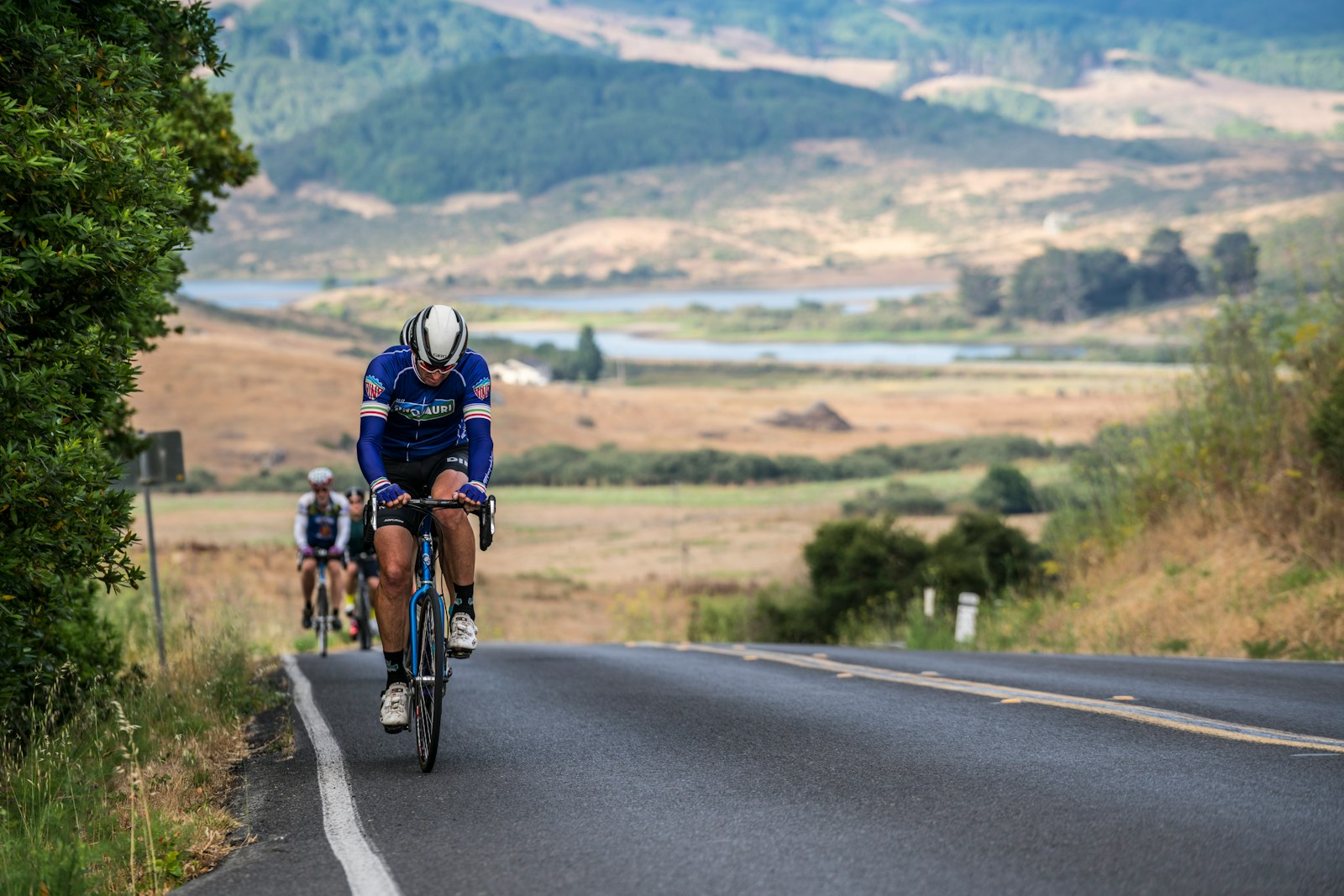🚴♂️ Transform Your Training with Data-Driven Insights
Whether you’re a weekend warrior or aspiring racer, understanding key cycling metrics can revolutionize your performance. From basic speed tracking to advanced heart rate variability, these 10 essential metrics will help you train smarter, ride stronger, and achieve your cycling goals faster than ever before.
💡 Quick Start Guide
New to cycling data? Start with the basics: speed, distance, and time. As you develop, gradually incorporate heart rate, power, and advanced metrics like HRV. Remember, the best metric has always been feel – use data to enhance, not replace, your natural riding instincts.
🏁 The Essential 10: Your Performance Tracking Toolkit
1. Speed & Average Speed 🏃♂️
Equipment needed: Basic bike computer
Speed is the gateway drug of cycling metrics! While environmental factors like wind and terrain make it unreliable for precise training, it’s fantastic for tracking long-term fitness trends. If you’re consistently averaging 16+ mph on routes where you used to struggle at 15 mph, you’re definitely getting stronger.
Pro Tip: Track both moving time and total time averages. For event training, knowing your pace including rest stops is crucial for making time cutoffs!
2. Distance 📏
Equipment needed: Basic bike computer
Nothing beats the satisfaction of seeing those miles add up! Distance tracking is perfect for progressive training – working from 50-mile weeks up to 100+ miles, or preparing for specific events like centuries.
Remember: 60 miles of flat road ≠ 60 miles of singletrack. Context matters!
3. Time ⏱️
Equipment needed: Any watch or bike computer
Time is your most finite resource! Training by time rather than distance helps you maximize busy schedules. Those with limited hours benefit most from polarized training: short, intense interval sessions during the week plus longer weekend rides.
4. Elevation Gain ⛰️
Equipment needed: GPS-enabled bike computer
Hills don’t lie – they make you stronger! Elevation gain tracks your vertical climbing, with gravity providing natural resistance training. Start with 500 feet per 10 miles, then work toward the coveted “golden ratio” of 1,000 feet per 10 miles.
Climbing lovers know: Every foot of elevation gained is an investment in your cycling strength bank account.
5. Calories Burned 🔥
Equipment needed: Heart rate monitor and/or power meter for accuracy
Proper fueling prevents the dreaded bonk! While device estimates can be wildly inaccurate (27-93% error rates), power meter data provides reliable calorie calculations through kilojoule conversion at a 1:1 ratio.
Fueling Formula: Replace about half the calories you’re burning per hour on rides longer than 3-4 hours. Your gut can’t handle replacing everything!
6. Cadence (RPM) 🔄
Equipment needed: Cadence sensor and bike computer
Forget the old “90 RPM rule” – research shows your ideal cadence depends on your muscle fiber type and cardiovascular fitness. New riders typically pedal slower as their cardio system develops, with cadence naturally rising as fitness improves.
Training Benefit: Use cadence for specific drills like high-cadence/low-gear and low-cadence/high-gear intervals to build both cardiovascular fitness and leg strength.
7. Rate of Perceived Exertion (RPE) 🧠
Equipment needed: Your heart, lungs, legs, and brain!
The most fundamental metric of all! On a 1-10 scale, RPE teaches you what different effort levels feel like. Research shows it’s as accurate as scientific equipment for measuring current effort, though it doesn’t provide the complete picture that other metrics offer.
Breathing Guide: If you can sing, you’re not working hard. If you’re gasping uncontrollably, you’re maxed out. Use this as your built-in effort gauge!
8. Heart Rate (BPM) ❤️
Equipment needed: Heart rate monitor and compatible device
Your internal engine’s tachometer! Heart rate training requires knowing your true max HR through field testing (forget the 220-minus-age formula). As fitness improves, you’ll ride faster at lower heart rates – a clear sign of adaptation.
Pro Insight: Combine HR with RPE for the complete picture. High RPE at normal HR targets signals you need recovery time.
9. Power (Watts) ⚡
Equipment needed: Power meter and compatible bike computer
The gold standard of cycling metrics! Power is absolute – you’re either producing 350 watts or you’re not. Training revolves around your Functional Threshold Power (FTP), typically determined through a 20-minute test multiplied by 0.95.
Why Power Rules: Unlike heart rate, power responds instantly to effort changes and isn’t affected by caffeine, temperature, or fatigue. It’s the ultimate training precision tool.
10. Heart Rate Variability (HRV) 📊
Equipment needed: Oura ring, Whoop strap, or HRV tracking device
The newest player in performance tracking! HRV measures the variation between heartbeats – counterintuitively, MORE variation indicates better recovery and training readiness. It’s highly individual and naturally declines with age.
Smart Application: Don’t obsess over daily readings. Look for trends over days and weeks. Rising HRV trends = getting fitter. Declining trends = need more recovery.
🎯 Putting It All Together: Training Zones
Zone 1 – Recovery
RPE: 1-2 | MHR: 60-65% | FTP: <55%
Ridiculously easy rides for healing and adaptation
Zone 2 – Endurance
RPE: 3-4 | MHR: 65-75% | FTP: 55-75%
Aerobic efforts where you can still hold conversations
Zone 3 – Tempo
RPE: 5-7 | MHR: 75-85% | FTP: 75-90%
Above comfort level but sustainable for long periods
Zone 4 – Threshold
RPE: 8-9 | MHR: 85-95% | FTP: 90-105%
Right at lactate threshold – rhythmic, controlled breathing
Zone 5 – VO2 Max
RPE: 9-10 | MHR: 95-100% | FTP: 105-120%
Full throttle efforts – short and intense (3-5 minutes max)
🏆 Your Next Steps
Remember, you don’t need to track every metric from day one. Start simple with speed, distance, and time. As you develop as a cyclist, gradually add heart rate, then power, and finally advanced metrics like HRV. The key is finding the right balance between data-driven training and riding by feel.
Most importantly: Let the data enhance your cycling experience, not dominate it. The best rides often happen when you forget about the numbers and just enjoy the journey!




This is exactly what I needed! I’ve been tracking speed and distance for years but never knew how inaccurate my calorie estimates were. Just ordered a power meter based on your kilojoule explanation. Question: if I’m already comfortable with heart rate training, is it worth jumping straight to power zones or should I master HR zones first? Also, love that you mentioned ‘feel’ – I use RPE for all my recovery rides and it’s been game-changing for avoiding overtraining.
Great question! If you’re already comfortable with heart rate training, you can definitely transition to power zones – they complement each other perfectly. I’d suggest using both together initially: power for precise interval work and heart rate for monitoring your body’s response. The beauty of power is its immediacy, while HR shows how your body is adapting to the workload. Starting with both gives you the complete picture and helps you learn how they correlate in different conditions.
As a cycling coach who works with everyone from beginners to Cat 1 racers, this guide hits all the right notes! The progressive approach is spot-on – I see too many riders jumping straight to power without understanding basic RPE. Your HRV section is particularly valuable since most athletes over-complicate it. One addition: for athletes tracking multiple metrics, consider periodization – focus on 2-3 metrics per training block rather than trying to optimize everything simultaneously. Great work breaking down the training zones too!
Perfect timing! I just started getting serious about cycling after years of casual rides. The ‘feel’ vs data balance really resonates – I was getting overwhelmed trying to track everything from day one. Starting with just speed/distance/time feels much more manageable. Quick question: for someone who only rides 3-4 times per week (mostly 1-2 hour rides), which metric would you add first? Heart rate or cadence? Also, does anyone have budget recommendations for a reliable heart rate monitor?
For your riding frequency and duration, I’d definitely recommend starting with heart rate first! It’ll give you much more valuable training insights than cadence at this stage. HR helps you understand your effort levels across different terrains and conditions, plus it’s crucial for pacing those 1-2 hour rides properly. For budget HR monitors, the Polar H10 chest strap (~$90) is incredibly reliable, or if you prefer wrist-based, the Garmin HRM-Dual (~$70) works great. Both pair with most bike computers and phones!
Brilliant article! As someone who’s been cycling for 15+ years, I wish I’d had this guide when I started. One thing that really stands out is your emphasis on not getting overwhelmed by data. I made that mistake early on – spent more time analyzing Strava than actually riding! 😅 For newer cyclists reading this: the HRV stuff is legit but don’t stress if your numbers look different from others. I’m 48 and my ‘good’ HRV is way lower than my 25-year-old son’s, but the TRENDS are what matter. Keep it simple, keep riding!